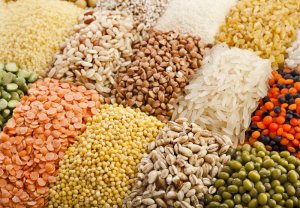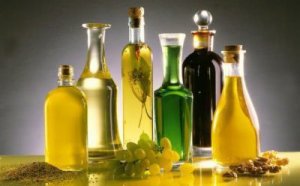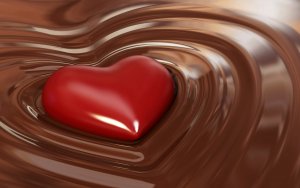List of foods containing potassium and magnesium for heart and vascular health
 In this scientific material, we will talk about the importance of trace elements such as potassium and magnesium for the health of the human cardiovascular system.
In this scientific material, we will talk about the importance of trace elements such as potassium and magnesium for the health of the human cardiovascular system.
We will discuss which foods contain sufficient amounts of these elements, as well as other important minerals and vitamins for the heart.
We will provide a complete list of products with the highest content of these elements, as well as indicate the symptoms of their deficiency.
Content
Why are these elements so important?
Potassium and magnesium are the most important components for both the most important human organ, the heart, and for the functioning of the cardiac conduction system (PSS).
Main functions of the PSS:
- Automatism - the ability of the heart muscle to rhythmically excite and contract without external stimulus, under the influence of stimulus generation, from the nodes of the PPP.
- Conductivity - the ability to conduct impulses from the point of its generation to the underlying departments along the contractile elements to the atria and ventricles.
- Excitability function - the ability to respond to endogenous and exogenous factors of irritation with the formation of active activity from a state of rest.
The correct operation of these processes is carried out due to a well-coordinated biomechanism at the cell level between potassium (K+), sodium (Na+), chlorine (Cl-) and magnesium (Mg++) ions.
List of potassium-rich foods
The list shows the potassium content in 100 g of the product:

- Dried fruits for heart health. Common representatives of healthy dried fruits are dried apricots and raisins . 100 g of dried apricots contain 1800 mg of the element, and 1020 mg in raisins.
- Nuts. Hazelnuts, walnuts, peanuts, cashews, almonds &8212; within 800 mg.
- Fruits. Among them are bananas (400 mg), grapes (1000 mg), citrus fruits (200 mg).
- Vegetables. The record holders are spinach (550 mg), potatoes (450 mg), mushrooms (450 mg), pumpkin (340 mg), tomatoes (230 mg).
- Cereals and legumes. The absolute leader is beans (1000 mg). It is followed by buckwheat (300 mg) and oatmeal (350 mg).
- Drinks. Green tea (2400 mg), as well as cocoa and coffee beans (1600 mg) can be distinguished.
Also check out the infographic:
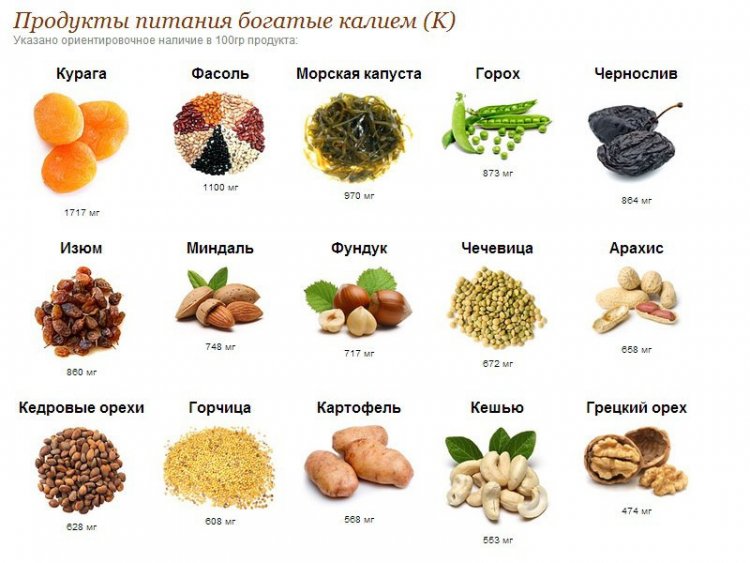
Some medical theory
Potassium is the most important permanent electrolyte of the buffer systems of a living organism, necessary to maintain the constancy of internal homeostasis. Together with magnesium, sodium and calcium, it ensures the stability of the electrical potential in nerves and on the surface of cell membranes, thereby reducing the muscle tissues of the entire body – from the heart to the skeletal muscle.
The disorder of potassium's relationship with his companions is dangerous due to the destruction of water metabolism, dehydration, hypotension of muscle tissues.
The most important biochemical function of potassium is considered to be participation in the structure of the membrane potential and the distribution of this potential over the cell surface. It helps to reduce the heart rate, prevent changes to a rapid arrhythmic heartbeat and, acting as the 10th pair of nerves, participates in regulating the vital activity of the heart.
In addition, it mediates vasodilation of the vessels of internal organs and narrowing of peripheral arteries, which contributes to adequate blood supply to the cardiac complex.
Properties of K+
Potassium is especially important because:
- Participates in maintaining the constancy of the internal life of the cell;
- Maintains a water-electrolyte balance;
- Promotes the transmission of stimuli through nerves and the interaction of organs and tissues;
- Ensures the active vital activity of the cell;
- Mediates nervous and muscular excitability and conduction;
- Regulates arterial pressure;
- Participates in the metabolic metabolism of B-W-U.
Food with high magnesium content
The list shows the Mg++ content in 100 g of the product:

- Nuts. It is especially important to consume peanuts (182 mg), hazelnuts (160 mg), pistachios and walnuts (120 mg), as well as pine nuts (251 mg).
- Fruits. Watermelon (10 mg), apricot (10 mg), tomatoes (11 mg), citrus fruits (9-10 mg).
- Vegetables. Pumpkin (590 mg), sesame (540 mg), seaweed (170 mg), dill (256 mg), potatoes (25 mg).
- Cereals and legumes. Bran (440 mg), buckwheat (250 mg), barley (150 mg), beans (140 mg).
- Drinks. Cocoa (245 mg), milk and dairy products (137 mg).
- Dark Chocolate (133 mg).
Also pay attention to the infographic:
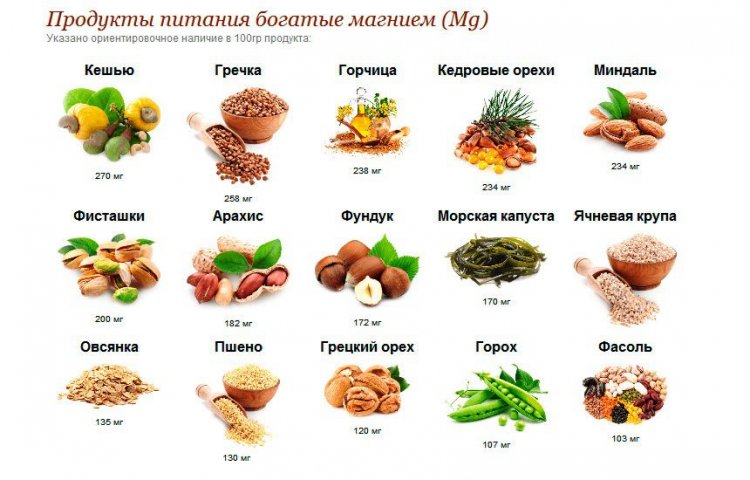
Magnesium is a trace element that regulates the tone of cardiomyocytes (relaxation), their well–coordinated interaction in the generation and propagation of an impulse.
The role of Mg++
Let's list the main properties of magnesium:
- It has a protective effect on the endothelium: protects the inner wall of the artery from damage by turbulent blood flow and during spasm under the influence of stress hormones.
- Has an anti-atherogenic effect, that is, slows down the accumulation of cholesterol on the damaged vessel, and the subsequent formation of plaque, which can transform into a blood clot.
- Disaggregation effect: leads to a decrease in blood clot formation due to blood thinning.
- Vasodilating effect: reduces the tone and general peripheral vascular resistance, which prevents the onset of arterial hypertension and hypertension.
- It helps to improve insulin-dependent glucose utilization.
- Strengthens the central nervous system (CNS) and develops immunity to stress. But stress is one of the predictors of the development of cardiovascular diseases), improves performance, relieves fatigue and irritability.
Daily intake of K+ and Mg++ ions for health
The daily requirement for potassium is 2.5 – 4.5 g. , and in magnesium &8212; 350 – 550 mg .
There are conditions when the need for elements increases:
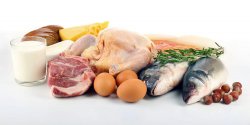
- Gastrointestinal pathology (peptic ulcer of the stomach and duodenum, gastritis, duodenitis, enteritis).
- Intensive physical work, systematic training.
- Chronic stress, intellectual load;
- Diabetes mellitus and other metabolic disasters;
- Pregnancy
- When working in conditions of high humidity and temperature;
- In acute coronary syndrome (ACS).
Also watch the video:
Symptoms of a lack of elements
Now let's look at what happens with a chronic lack of K+ and Mg++ in the body.
Potassium deficiency
What threatens the lack of this element:

- Rhythm disruptions. Blockades, extraordinary contractions – extrasystoles, paroxysmal rhythms, additional foci of arousal.
- Blood viscosity increases , which leads to thrombosis and the occurrence of myocardial infarction, stroke, pulmonary embolism.
- The tone and elasticity of the walls of blood vessels decreases, salts and connective tissue accumulate in them, which increases their stiffness and leads to the development of arterial hypertension.
- Due to the deposition of salts, the growth of atherosclerotic plaque progresses.
- Metabolic and energy transformations in the myocardium are disrupted , entailing ischemia and muscle dystrophy.
Clinical manifestations:
- Chest pain.
- Tachycardia.
- Hypertension > 140/90 mmHg.
- Poor exercise tolerance.
Lack of magnesium
What happens when this element is deficient:
- RAAS is suppressed, which leads to vasoconstriction. With prolonged deficiency, arterial hypertension develops. Timely correction of magnesium deficiency (hypomagnesemia) by including the right foods in the diet allows you to bring blood pressure back to normal; and with the necessary long–term diuretic therapy, restore receptor sensitivity to the drug.
- Provocation of the development of ischemic disease of the heart due to an increase in the concentration of low-density lipoproteins and triacylglycerides.
- Chronic heart failure (CHF) - as a result of untreated hypertension and coronary heart disease. Moreover, the severity of CHF often corresponds to the degree of deficiency: the less it is received, the faster the insufficiency progresses and the condition worsens.
- Arrhythmias. Prolonged hypomagnesemia is associated with the formation of paroxysmal tachycardia, extrasystoles, atrial fibrillation, ventricular fibrillation.
- In alcohol poisoning, there is a tendency to rapid development of myopathy, neuropathy, arrhythmias and myocardial dystrophy.
Signs of excess of K+ and Mg++ ions in the body
The pathological basis of hyperkalemia and hypermagnesemia are kidney diseases (chronic kidney disease, nephritis), ACS (heart attack + angina pectoris) and pathological metabolic changes (gout, diabetes mellitus), or drug overdose.
K+ Excess Clinic

- Excitement.
- Adynamia.
- Slowing of atrioventricular conduction.
- Pericarditis (uremic).
- Increased urine separation.
- Paresthesia of the extremities.
- Sudden death of the heart.
Mg++ Excess Clinic
An increase in the concentration of magnesium in the blood above the norm reduces blood circulation and inhibits the contractility of the heart muscle, as a result of which:
- Bradycardia develops – heart rate < 40 per minute and a decrease in contraction of the chambers of the heart, and consequently – blood flow through the arteries and to internal organs.
- Disorganization of the impulse between the atrium and ventricle occurs – extrasystoles occur.
- Arterial hypotension is formed due to vascular relaxation, which clinically manifests itself as darkening of the eyes, fainting, convulsions, cyanosis of the extremities.
- The risk of sudden cardiac death increases.
- On external examination: red complexion, thirst, pronounced hypotension, development of a pathological type of breathing, convulsions).
In addition:
- Excess inhibits the work of the central nervous system, reducing the activity of nerve cells (lethargy, impaired frequency of respiratory movements, pathological shallow breathing).
- Lowers muscle tone due to inhibition of acetylcholine and, accordingly, the transmission of a nervous jolt. Muscular hypotension is manifested not only by the inability to move, but also, for example, profuse diarrhea – because the muscles of the sphincter are unable to hold the contents of the intestine.
The effects of the protective action of "polarka" for cardiomyocytes (the nutritional effect of glucose, the capture of toxic free fatty acids) are also described.
Related videos
Finally, we recommend you to read the video below:
Conclusion
Potassium and Magnesium are indispensable elements of the normal functioning of the cardiac complex and vascular system, prevention and treatment of atherosclerosis, arterial hypertension, rhythm disorders, CHF, coronary heart disease, as well as metabolic disorders against the background of oncopathology, anemia of chronic disease, multiple organ failure.
So why overpay for medicines if you can prevent a catastrophe by including delicious and healthy foods in your diet? The choice is yours! Be healthy!

